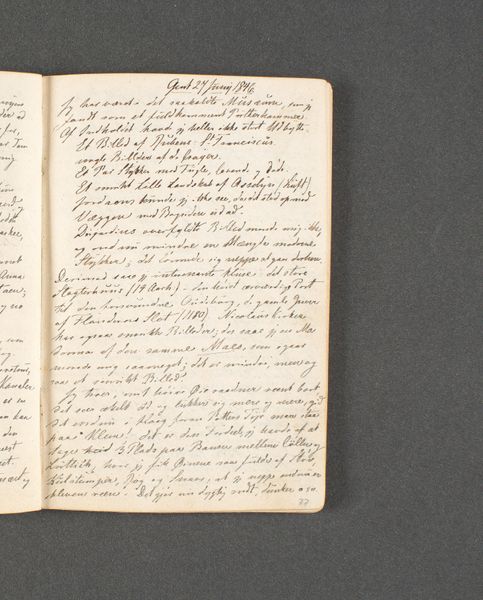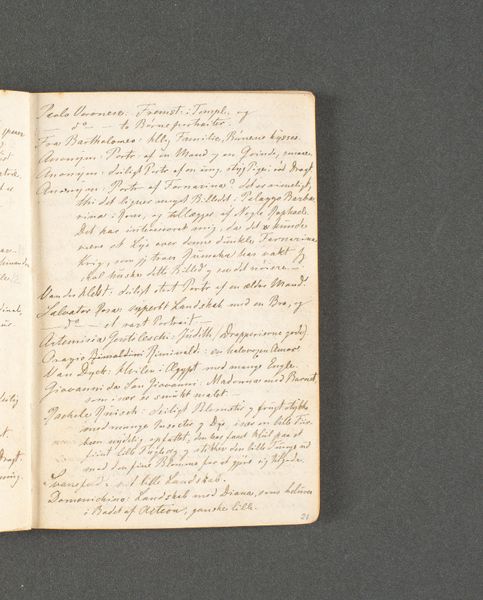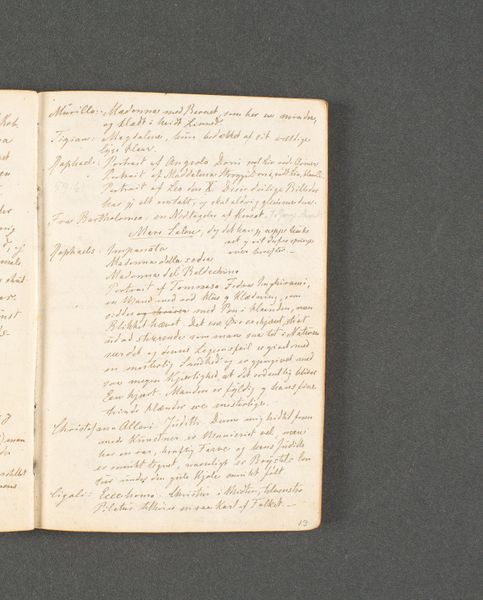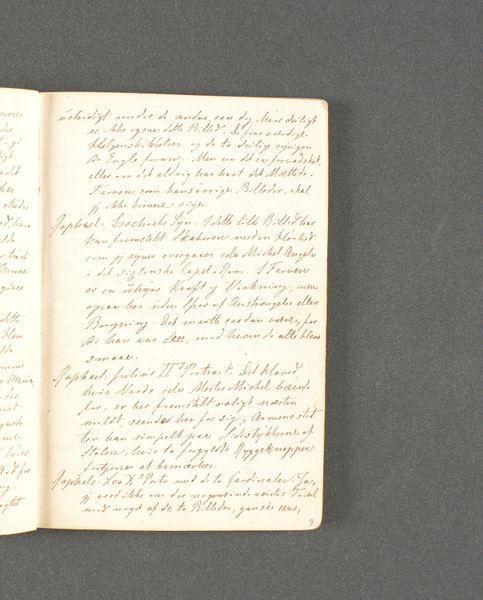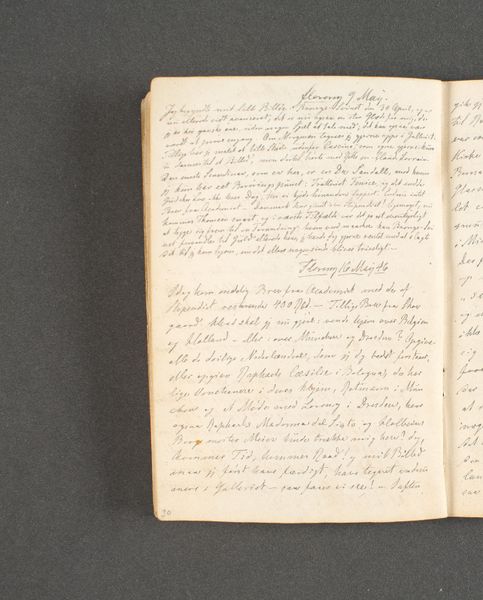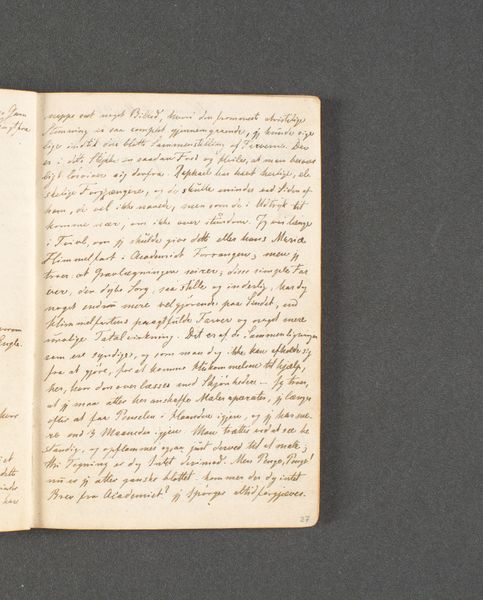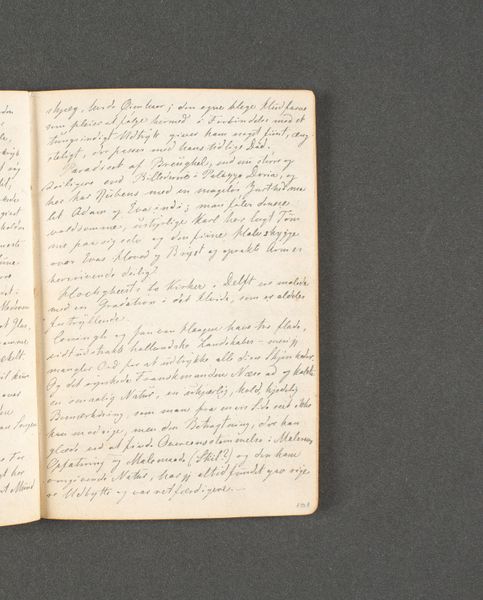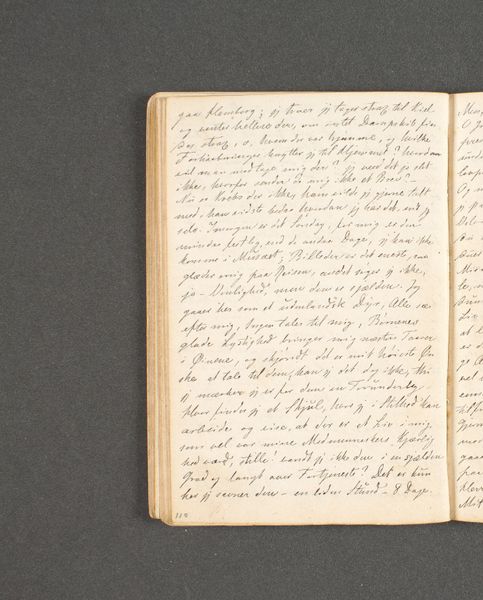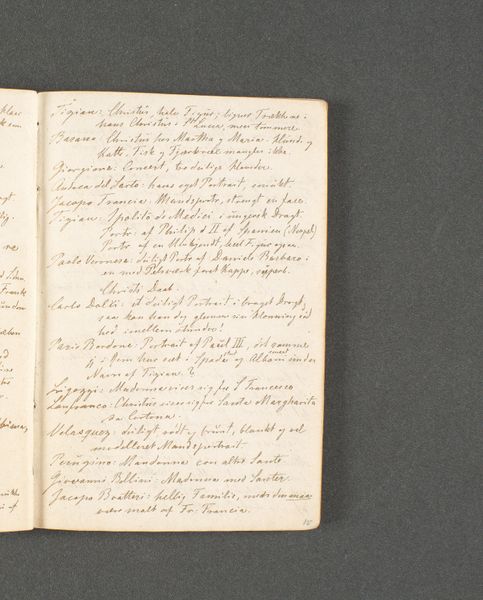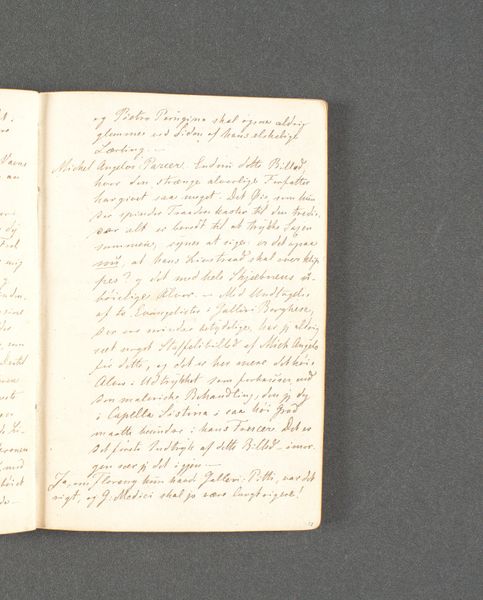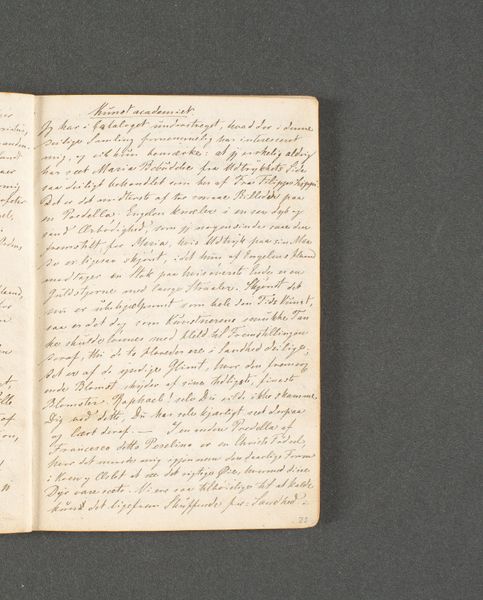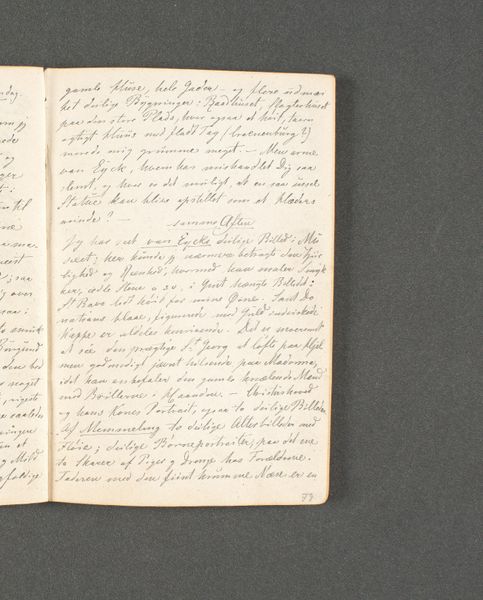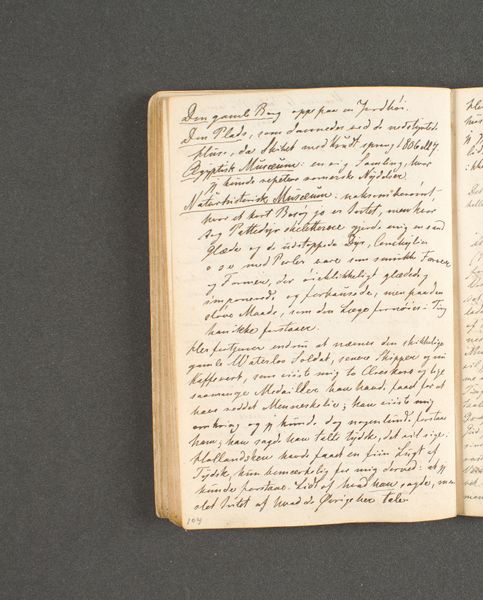
drawing, paper, ink
#
drawing
#
narrative-art
#
landscape
#
paper
#
ink
#
journal
#
romanticism
Dimensions: 131 mm (height) x 89 mm (width) (bladmaal)
Curator: Today we’re examining a page from Johan Thomas Lundbye's 1846 travel journal, titled "Rejsedagbog. Haarlem." It’s an ink drawing on paper, housed at the SMK, the National Gallery of Denmark. Editor: The dense, almost frantic script gives me a strong impression of being immediately within Lundbye's subjective experience. There's a raw energy in its composition, which contrasts intriguingly with its intimate scale. Curator: It is intimate. Lundbye, a key figure in Danish Romanticism, primarily used this journal for sketching, but here he's diligently recording his impressions through prose. It reveals his intellectual and artistic process in real time. Editor: Looking at the concentration of ink, the very *material* of this entry— the quill scratching across the paper —suggests the physical act of writing was key to processing what he saw. It seems he prioritized documentation over refinement. We glimpse not just his observations but the labor involved in forming them. Curator: Absolutely. Consider, for instance, his notations about Haarlem’s architecture. Lundbye carefully details buildings, recalling his visits to specific sites, even reflecting on works by artists like Rubens. Note the reference to the "House of Nassau," suggesting historical engagement alongside immediate visual appreciation. Editor: That architectural focus speaks volumes. This isn't just idle observation. Lundbye’s chronicling of structures—material reality crafted by labor—mirrors Romanticism’s deep concern with how environments shape human identity. Were journals like this luxury goods or accessible notebooks that helped enable such observations by a larger portion of working artist? Curator: An insightful question that expands the artwork's scope, for certain. By using this accessible format, Lundbye made art and cultural reflections more accessible, fostering greater public interest and interaction with Denmark's artistic narrative. Editor: So, from a simple page of ink, we’ve unlocked ideas about art production, social access, and historical awareness. A valuable lesson, I believe, about seeing the extraordinary within the ordinary materiality of a journal.
Comments
No comments
Be the first to comment and join the conversation on the ultimate creative platform.
